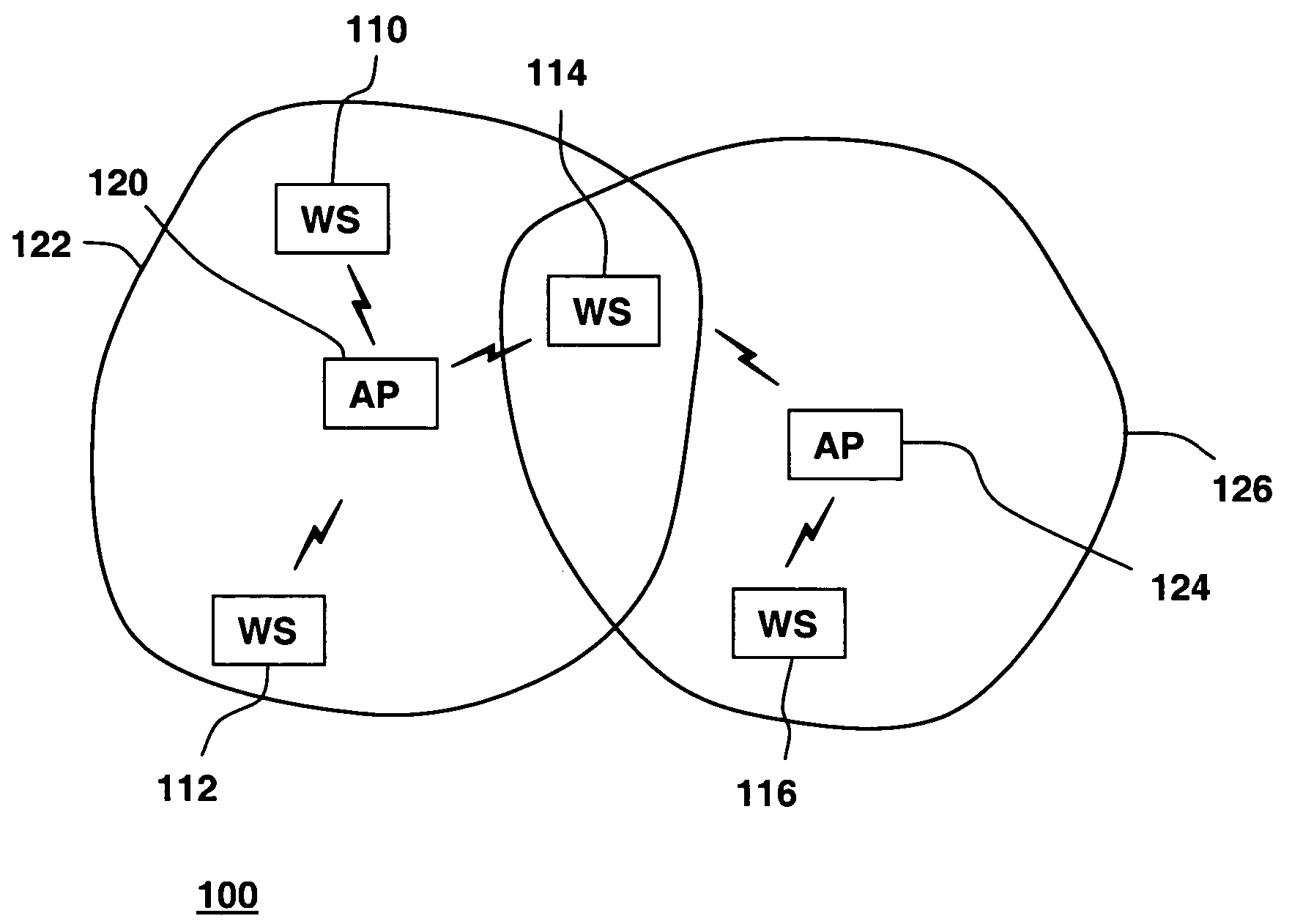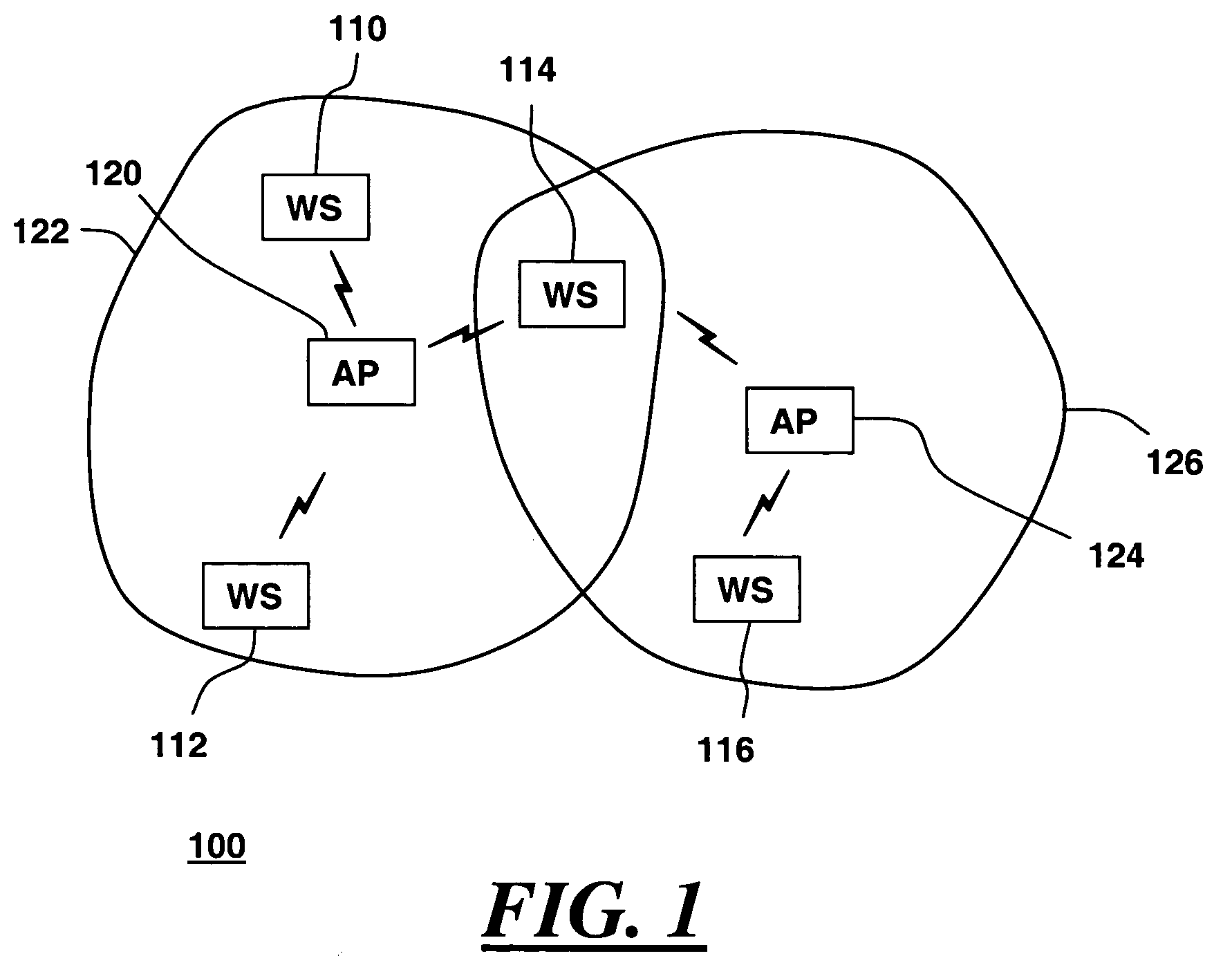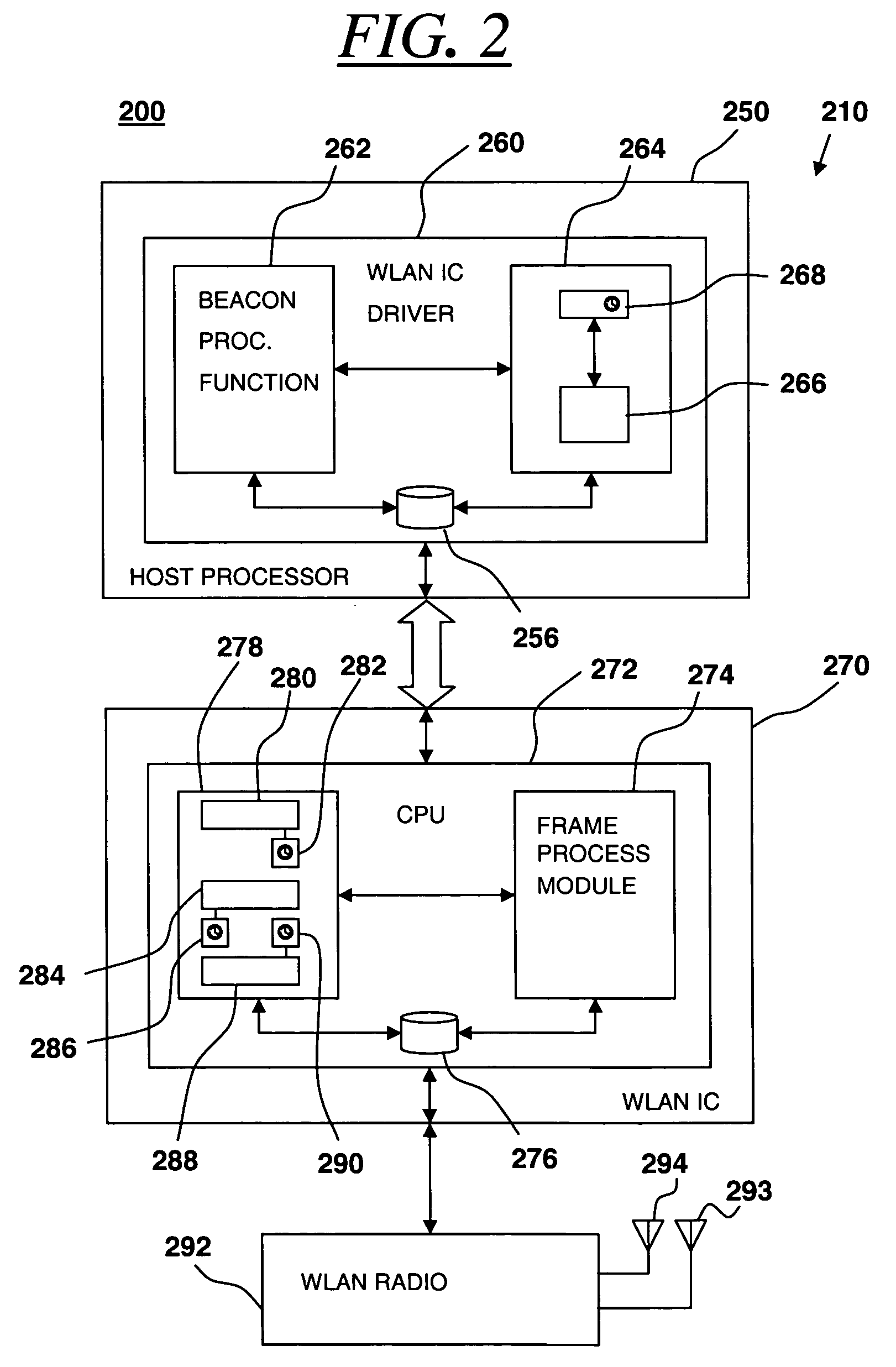Method of scanning for beacon transmissions in a WLAN
a beacon transmission and scanning technology, applied in the field of operating wireless communication systems and wireless local area networks, can solve the problems of access point beacons, time keeping differences, and time-keeping issues of access points
- Summary
- Abstract
- Description
- Claims
- Application Information
AI Technical Summary
Benefits of technology
Problems solved by technology
Method used
Image
Examples
Embodiment Construction
[0014]FIG. 1 shows a wireless local area network (WLAN) 100, in accordance with one embodiment of the present invention. WLAN 100 includes one or more wireless communication devices referred to herein as wireless stations 110, 112, 114 and 116, and one or more access points 120 and 124. Access points 120 and 124 are typically connected to an infrastructure network, which in turn may be connected to other wired and wireless networks, as is known in the art. For purposes of example, the two access points shown here are each associated with different organizations, and connect to different networks. Wireless stations 110, 112, 114 and 116 include radio transmitters and receivers for transmitting and receiving signals such as voice data for voice over IP communication, data packets, control frames, and network management frames. Wireless stations 110, 112, 114 and 116 can communicate wirelessly with access points 120 and 124. Access point 120 has a serving area 122 within which wireless...
PUM
 Login to View More
Login to View More Abstract
Description
Claims
Application Information
 Login to View More
Login to View More - R&D
- Intellectual Property
- Life Sciences
- Materials
- Tech Scout
- Unparalleled Data Quality
- Higher Quality Content
- 60% Fewer Hallucinations
Browse by: Latest US Patents, China's latest patents, Technical Efficacy Thesaurus, Application Domain, Technology Topic, Popular Technical Reports.
© 2025 PatSnap. All rights reserved.Legal|Privacy policy|Modern Slavery Act Transparency Statement|Sitemap|About US| Contact US: help@patsnap.com



